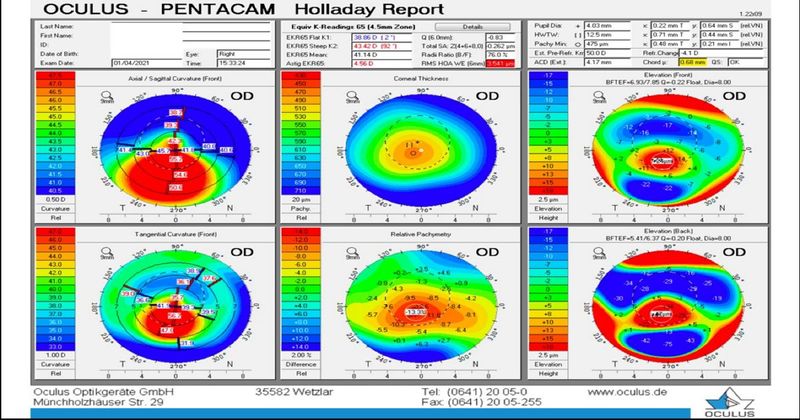BLOG: I hope he forgets about keratoconus
Click Here to Manage Email Alerts
An optometrist friend suspected keratoconus in her 13-year-old son, based on topography. She had initially become concerned when the boy’s right eye couldn’t be corrected to 20/20.
I confirmed the diagnosis of bilateral keratoconus, worse in the right eye, based on Pentacam (Oculus) imaging and the topographic history. We performed epi-off corneal collagen cross-linking on the right eye in late January and are planning for future cross-linking on the left eye. Although on the younger side, this patient did great with my normal method for performing cross-linking. He tolerated the procedure well and did great in the immediate peri-procedure period.

Although this patient is younger than the population tested in pivotal clinical trials in the U.S., there is no age restriction when using the iLink corneal remodeling system (Glaukos) approved for cross-linking in the U.S. I feel comfortable performing cross-linking in younger patients with clear evidence of progression. Our European colleagues have published results in children as young as 8 years old, in some cases with 10-year follow-up, demonstrating that epithelium-off cross-linking halts progression in 75% to 80% of cases; epithelium-on cross-linking was not shown to be as effective. Keratoconus in children can be more aggressive than in adults, with a greater risk for rapid progression. For this reason, early diagnosis is crucial.
In fact, it is the youngest patients who have the most to gain from early intervention, in terms of the impact on their quality of life. With someone who still has good vision, we have the opportunity to not only prevent the need for a penetrating keratoplasty, but also avoid dependence on rigid or scleral contact lenses. As good as those specialty lenses are, it is even better if we can keep patients in more convenient, less costly, soft contact lenses or glasses — or even no vision correction at all. My hope for this young patient is that he will forget he ever had keratoconus, rather than it becoming a lifelong burden.

We need to work on making keratoconus more than an afterthought when examining young people whose prescriptions are changing rapidly or do not reach 20/20. When a child can only be corrected to 20/30, it’s easy to chalk it up to a lack of effort on the child’s part, but sometimes it’s more than that. When in doubt, I recommend a quick pinhole near vision test to evaluate visual potential. If the vision improves with a pinhole, it is likely due to an uncorrected refractive error. We should suspect keratoconus and investigate further with topography and tomography.
Reference:
- Buzzonetti L, et al. Cornea. 2020;doi:10.1097/ICO.0000000000002420.
Collapse
Buzzonetti L, et al. Cornea. 2020;doi:10.1097/ICO.0000000000002420.
